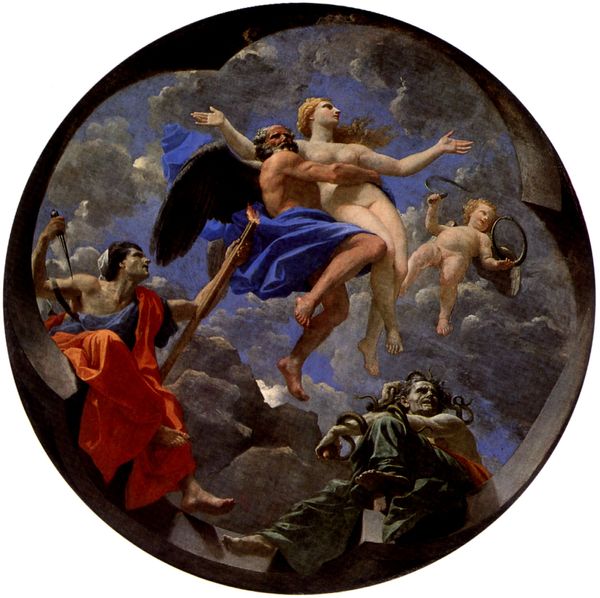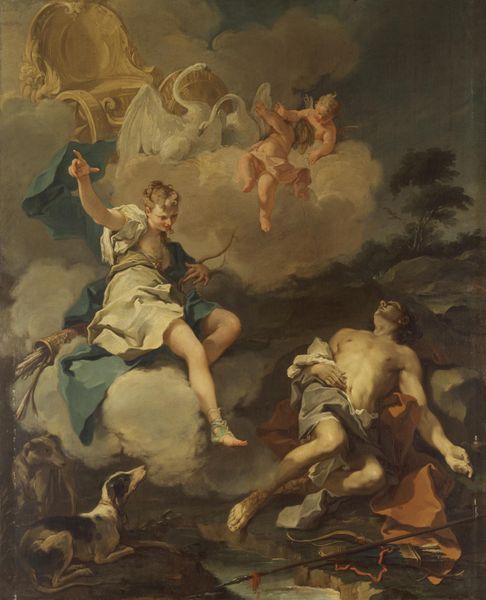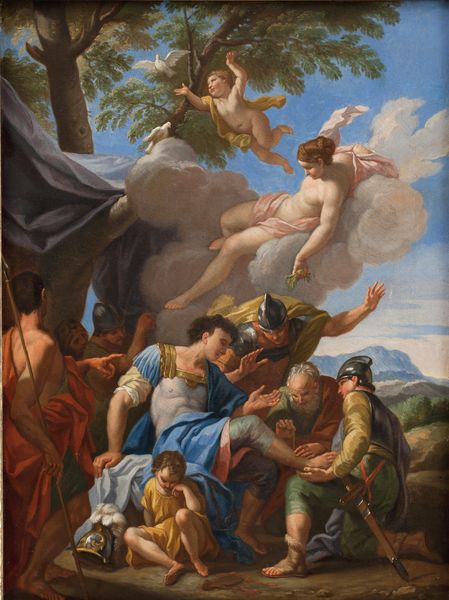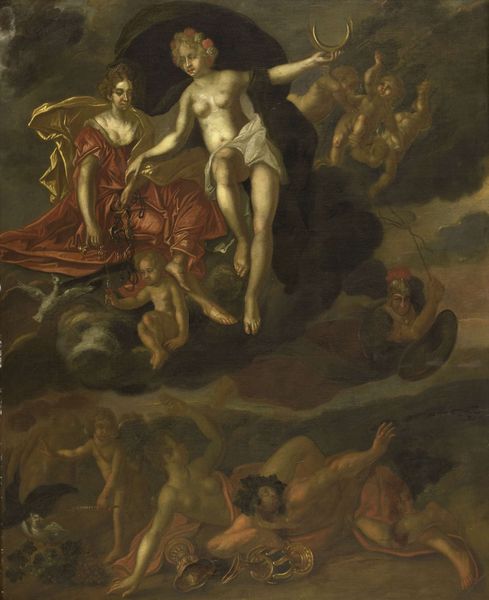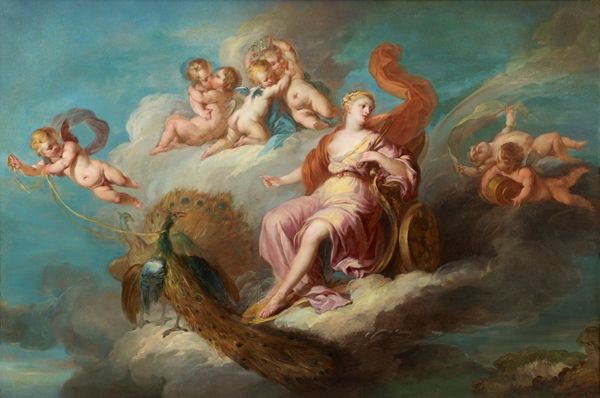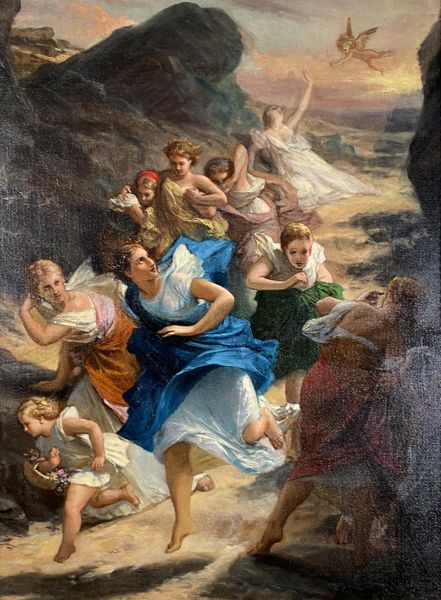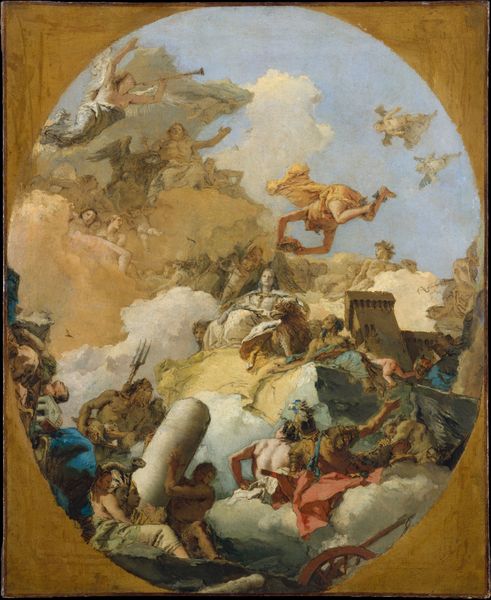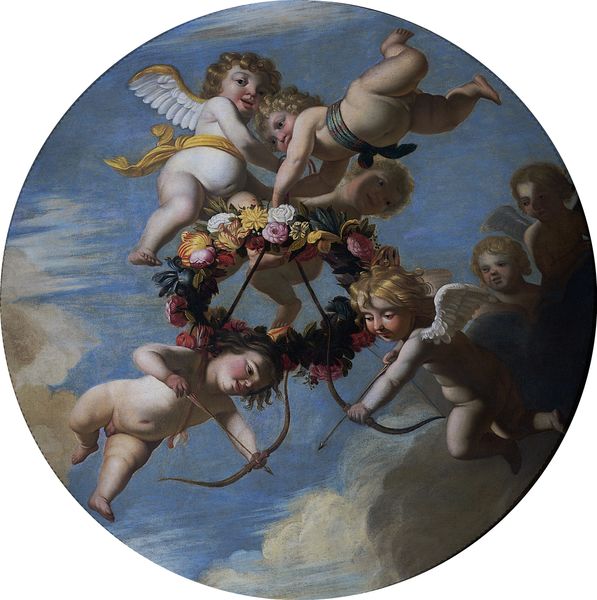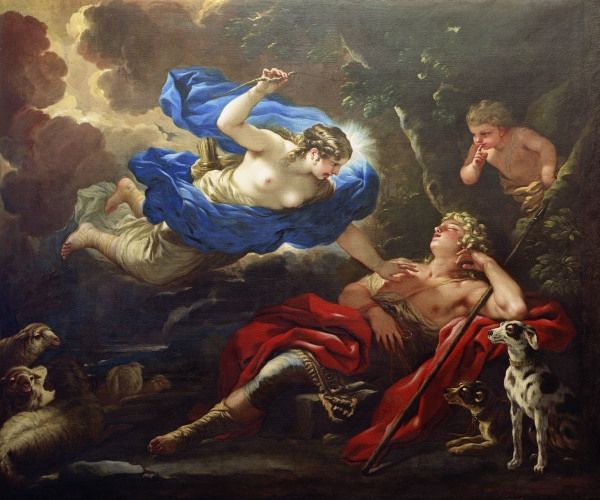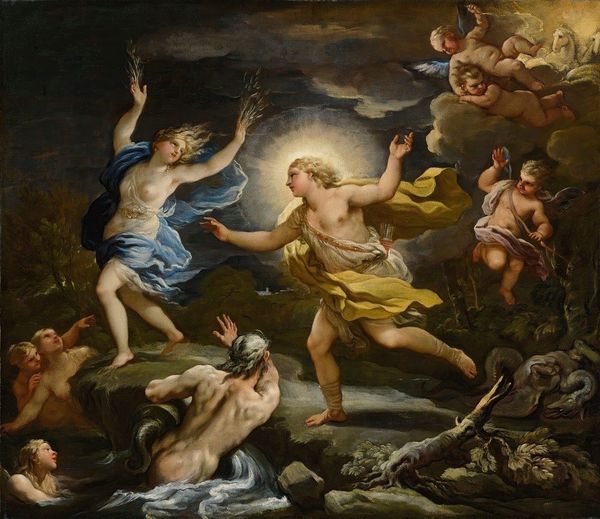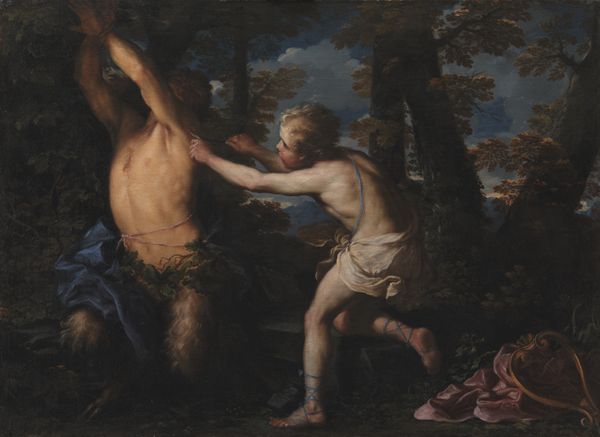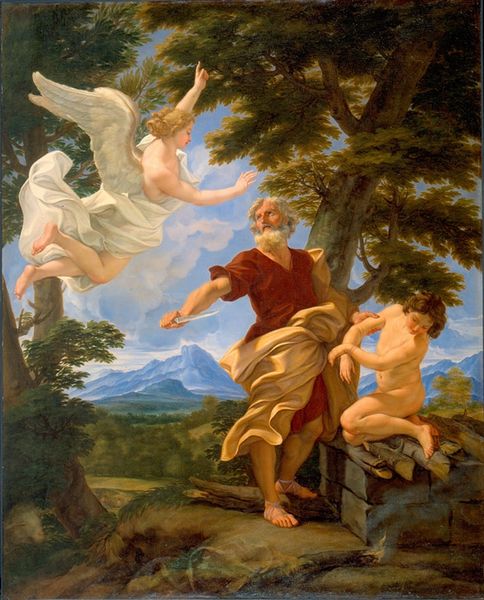
painting, oil-paint, canvas
#
baroque
#
painting
#
oil-paint
#
landscape
#
figuration
#
canvas
#
framed image
#
underpainting
#
painting painterly
#
history-painting
#
watercolor
Dimensions: 203.7 cm (height) x 170.8 cm (width) (Netto)
Editor: Here we have Nicolas Poussin's "Moses and the Burning Bush," painted in 1641. It's an oil on canvas. The way Moses is recoiling really grabs me; what details stand out to you in this piece? Curator: For me, it's about understanding the materiality of the painting itself and how that intersects with the social context. Look at the canvas—how was it sourced, prepared? Oil paint, pigments— where did those materials come from? Knowing that Europe relied on exploited labor and resource extraction to obtain luxury materials like high quality pigments opens a completely new dimension of this history painting. Editor: So, thinking about where the materials come from shifts the whole story? Curator: Exactly. This isn't just a religious scene; it's a product of colonial trade networks and power dynamics. The artist is a manufacturer as much as he is a visionary, making use of available labor. Editor: That’s not something I'd considered before. Does this perspective change how we view Poussin’s artistic choices? Curator: Absolutely. We start to see that artistic expression is embedded within material constraints and global inequalities. Were cheaper materials available? What determined which materials would be utilized, who had the authority to select and obtain materials? How were the labourers involved impacted in the supply chain? It encourages us to see the scene, and its production, in relationship to human endeavor, a history, labour, trade. Editor: It's a different perspective from the typical art history lecture. It gives me a deeper, uncomfortable but insightful look at the painting. Curator: Indeed. This work now appears to reveal the conditions that allowed for this artwork to manifest, and not just a presentation of religious story.
Comments
statensmuseumforkunst almost 2 years ago
⋮
Poussin painted and drew a range of scenes showing the Old Testament figure of Moses. In the artist’s own day Moses was considered a ”type” – a predecessor – of Jesus, and the narratives of the Pentateuch were seen as foreshadowing the New Testament stories about the Messiah. The painting merges two passages from Leviticus and The Book of Numbers (3:2; 34:3). God appears to Moses in the form of a burning bush that is never consumed by the flames, ordering him to lead the Jewish people out of Egypt. The staff of Moses is transformed into a snake; a miracle that convinces the Jewish people that they should follow Moses. The entire composition exudes the same sense of weight and calm as sculptures from classical antiquity.
Join the conversation
Join millions of artists and users on Artera today and experience the ultimate creative platform.
